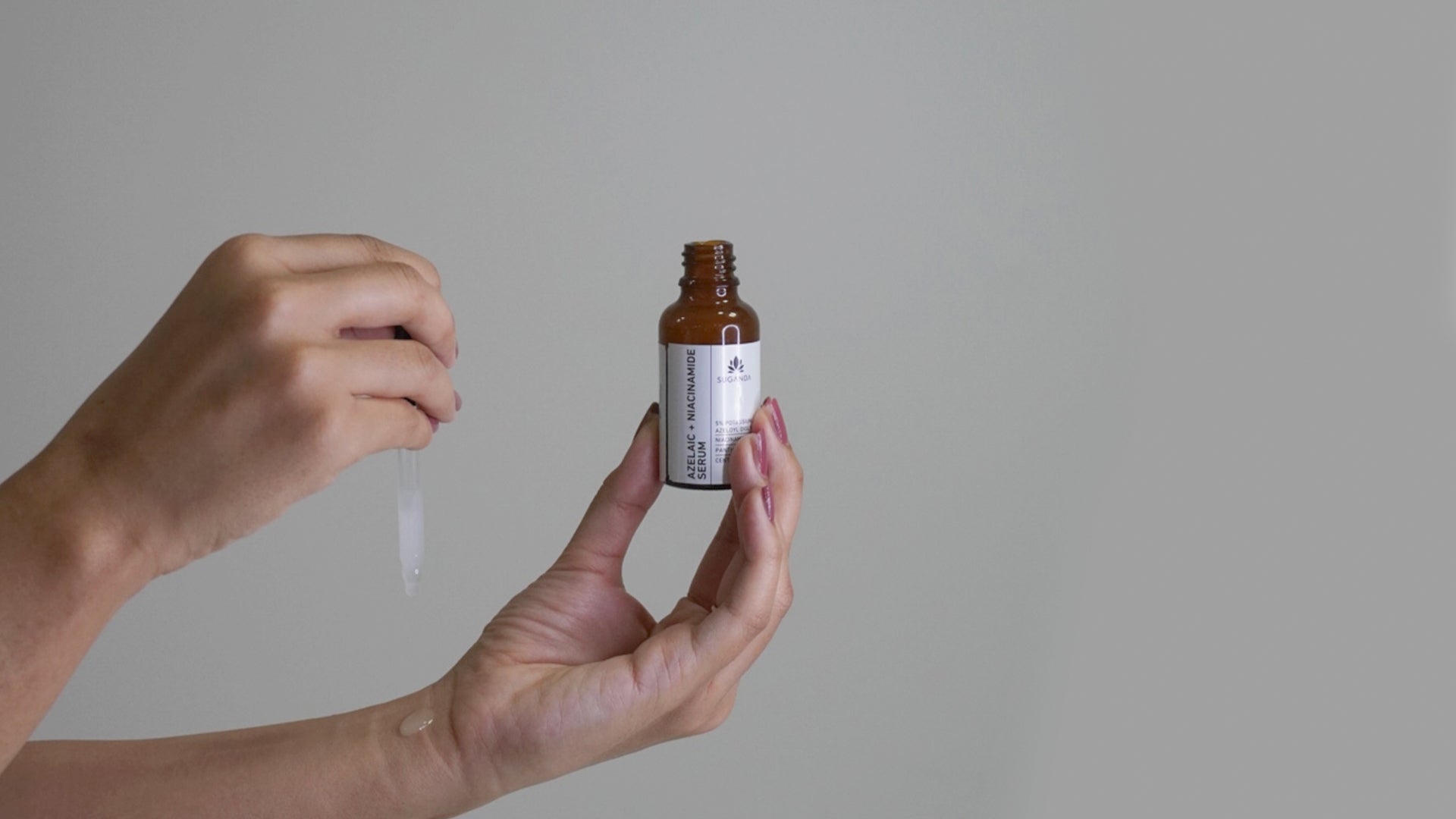Master of none, jack of all trades Azelaic acid is not considered a regular acid as compared to glycolic acid, salicylic acid, or any other AHA or BHA.
It is sometimes referred to as a "jack of all trades, master of none," as it has many functions.
For example, it may not be a powerful exfoliant like glycolic and salicylic acid, but rather work more gently.
It also has antimicrobial and anti-inflammatory properties, greatly minimises the appearance of skin blemishes and helping in the fading of post-acne marks and other discolorations.
Dermatologists love this versatile ingredient because of the countless skincare benefits it brings.
In short, azelaic acid is an ingredient you need to know about.
What is Azelaic Acid?
Azelaic acid is a dicarboxylic acid that is naturally present in the body and in grains such as rye, wheat, and barley.
The lab-engineered form is typically used in skin care formulas because of its greater stability and effectiveness than derived from the grains.
It has antimicrobial and anti-inflammatory properties, which make it effective in the treatment of skin conditions like acne, rosacea, and even melasma (overproduction of melanin that occurs due to hormone flux or sun damage), and acne marks.
The acid also prevents future outbreaks and cleans bacteria from your pores that cause acne.
Azelaic acid can disrupt the balance between testosterone and oil production in the body.
This can be good for a teenager going through puberty, when hormone fluctuations cause acne.
Using a 15% to 20% cream can lower the amount of bacteria on the skin.
Benefits of Azelaic Acid for Skin
Treating acne
People who cannot tolerate strong acids like benzoyl peroxide, retinol, and salicylic acid can use this acid for breakouts.
It acts as an anti-keratinizing agent that prevents the buildup of dead skin cells, which can cause congestion and reduce free fatty acid production, part of the pathogenesis of acne that also causes skin irritation.
Hyperpigmentation treatment
It is also used for treating skin pigmentation concerns, including melasma and
post-inflammatory hyperpigmentation (PIH).Azelaic acid inhibits tyrosinase, an enzyme that aids in the formation of melanin.
As a result, if your cells are driven to overproduce melanin in a certain area of your body, azelaic acid will block the process and prevent you from getting those nasty brown spots. Aren't they bold claims?
Azelaic acid has been shown to erase hyperpigmentation produced by the skin disorder melasma, and another study has shown that people with PIH can use it as a treatment option.
Acne marks
Due to its high molecular weight, azelaic acid is a more gentle exfoliant and actually reduces skin sensitivity by reducing proinflammatory cytokines.
Azelaic acid provides comedolytic and antimicrobial benefits, by addressing blemishes while minimising impact on the skin’s natural microflora.
As a gentle exfoliant and tyrosinase inhibitor, it improves post-acne marks and scars.
Azelaic acid and niacinamide together
It is skin care one step easier.
Like azelaic acid, niacinamide reduces fatty acid production and inhibits proinflammatory cytokines. It also reduces melanosome transfer, addressing a different mechanism in melanogenesis to further brighten the skin.
Layering azelaic acid and niacinamide can improve skin congestion, inflammatory congestion, and fade post-acne marks for even the most sensitive skin.
Sources
Journal of Drugs in Dermatology: "The Efficacy and Safety of Azelaic Acid 15% Foam in the Treatment of Facial Acne Vulgaris."
American Academy of Dermatology: "Rosacea treatment: Acne-like breakouts."







 +91 9347578980
+91 9347578980